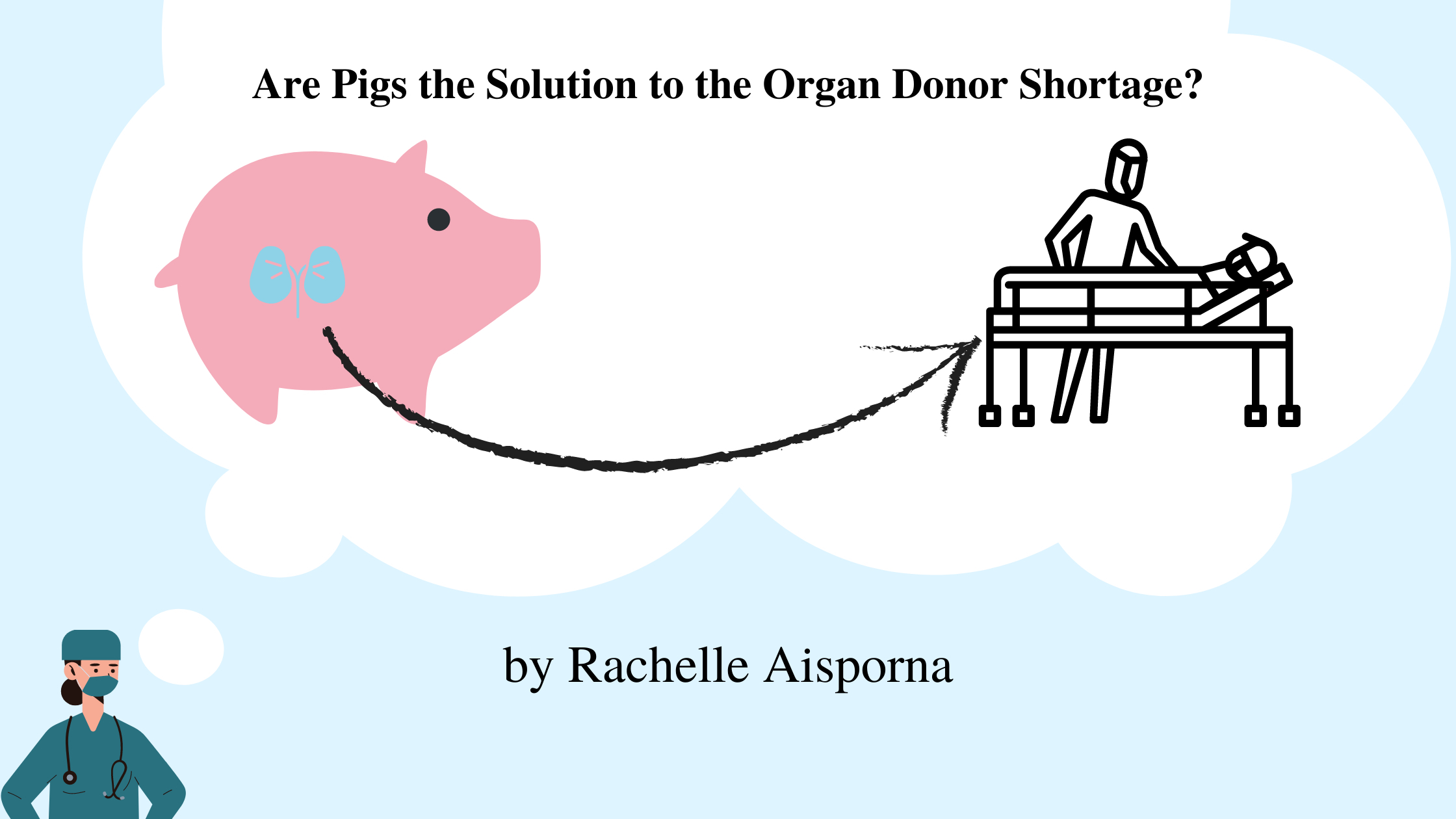 Author: Rachelle Aisporna
Author: Rachelle Aisporna
What comes to mind when you think of pigs? Maybe you see them as a loving and loyal pet, maybe as the main character in Charlotte’s Web, or simply this morning’s strip of bacon. Regardless of if you picture cute pigs in a blanket or a plate of pigs in a blanket, these iconic farm animals may now hold a new role in medicine as organ donors for humans.
Xenotransplantation, the transplanting of non-human cells, tissues, and organs into humans through medical procedures, has been explored for centuries. The extent of “successful” xenotransplantations varies depending on the type of procedure done and the source of what was transplanted. For instance, animal-to-human blood transfusions generally have a better success rate compared to animal-to-human organ transplants considering the higher risk surgery naturally involves. There have been a few fairly successful animal-to-human organ transplants using baboon organs where the human recipient was able to live up to a couple months or years after surgery, but never a full lifespan. This short-lived success results from hyperacute rejection, where the human immune system identifies any non-human organ in the body as a foreign and harmful object and immediately destroys it.
In any case, why does xenotransplantation even matter? According to the Health Resources and Services Administration (HRSA), 106,707 men, women, and children combined are currently on the national transplant waitlist with 17 people dying everyday, unable to receive an organ transplant. At the moment, organs are supplied from cadaver donations, but such a source is not enough to meet the current demand. Doctors now turn to xenotransplantation as a possible solution to this shortage if only its success rate for full organ transplants increases.
This is where pigs actually come into the scene. On October 2021, Dr. Robert Montgomery and his team of surgeons at the New York University Langone Transplant Institution successfully transplanted one whole pig kidney into a human without signs of the body rejecting the organ. With permission from the family, the team used a “brain dead” recipient who was declared unable to survive without a ventilator. The kidney implant came from a genetically modified pig lacking alpha-gal , an enzyme known to make the human body reject pig organs. When the kidney was attached to the recipient’s thigh, the surgeons monitored its function for 54 hours, seeing urine and creatine (a waste product from the movement of the muscles) production equivalent to a healthy human kidney within that time. In an interview a few days after the procedure, Dr. Montgomery explains how xenotransplantation can be further perfected in the future, with genetically modified pigs becoming a supplier for human organs and ending the organ shortage.
Although the successful pig-to-human kidney transplant immediately became a beacon of hope for many doctors, there is concern about the ethical correctness and biological safety of continuing to use pigs as organ sources. Doctors desperately want to find another source for organs on top of cadaver donations but do not want to cross over the line to ethically questionable sources, which is why organ markets have never been used, let alone considered. In terms of xenotransplantation, some people question whether it is still ethically acceptable to raise pigs for the sole reason of organ harvesting for human transplants. There is also the concern of diseases being passed from the animal to the human, although there are no known infections from pig organs so far.
With the need for further research, experimentation, and ethical considerations, it may take a while for pigs to officially become human organ donors. Nonetheless, xenotransplantation, specifically using pigs, is the direction many doctors are heading towards as they search for a solution to the worldwide organ shortage. Should the process be perfected in the imminent future, as Dr. Montgomery hopes, the deaths of many people, regardless of age or gender, can be avoided and the number of people waiting for an organ donor can finally decrease.









